 वट§
वट§
Vata, the banyan tree, Ficus indicus, symbolizes Hinduism, which branches out in all directions, draws from many roots, spreads shade far and wide, yet stems from one great trunk. Siva as Silent Sage sits beneath it. Aum.§
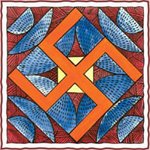 स्वस्तिक§
स्वस्तिक§
Swastika is the symbol of auspiciousness and good fortune—literally, “It is well.” The right-angled arms of this ancient sun-sign denote the indirect way that Divinity is apprehended: by intuition and not by intellect. Aum.§
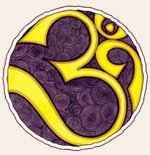 प्रणव ॐ§
प्रणव ॐ§
Pranava, Aum, is the root mantra and primal sound from which all creation issues forth. It is associated with Lord Ganesha. Its three syllables stand at the beginning and end of every sacred verse, every human act. Aum.§
 गणेश§
गणेश§
Ganesha is the Lord of Obstacles and Ruler of Dharma. Seated upon His throne, He guides our karmas through creating and removing obstacles from our path. We seek His permission and blessings in every undertaking. Aum.§
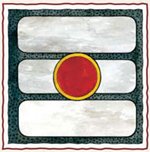 त्रिपुण्ड्र§
त्रिपुण्ड्र§
Tripundra is a Saivite’s great mark, three stripes of white vibhuti on the brow. This holy ash signifies purity and the burning away of anava, karma and maya. The bindu, or dot, at the third eye quickens spiritual insight. Aum.§
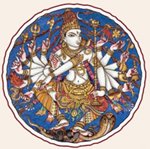 नटराज§
नटराज§
Nataraja is Siva as “King of Dance.” Carved in stone or cast in bronze, His ananda tandava, the fierce ballet of bliss, dances the cosmos into and out of existence within a fiery arch of flames denoting consciousness. Aum.§
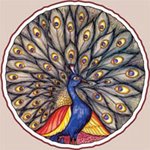 மயில்§
மயில்§
Mayil, “peacock,” is Lord Murugan’s mount, swift and beautiful like Karttikeya Himself. The proud display of the dancing peacock symbolizes religion in full, unfolded glory. His shrill cry warns of approaching harm. Aum.§
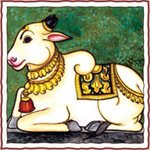 नन्दि§
नन्दि§
Nandi is Lord Siva’s mount, or vahana. This huge white bull with a black tail, whose name means “joyful,” disciplined animality kneeling at Siva’s feet, is the ideal devotee, the pure joy and strength of Saiva Dharma. Aum.§
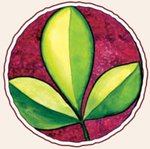 बिल्व§
बिल्व§
Bilva is the bael tree. Its fruit, flowers and leaves are all sacred to Siva, liberation’s summit. Planting Aegle marmelos trees around home or temple is sanctifying, as is worshiping a Linga with bilva leaves and water. Aum.§
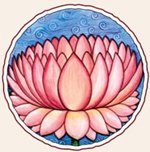 पदु§
पदु§
Padma is the lotus flower, Nelumbo nucifera, perfection of beauty, associated with Deities and the chakras, especially the 1,000-petaled sahasrara. Rooted in the mud, its blossom is a promise of purity and unfoldment. Aum.§
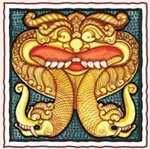 महाकाल§
महाकाल§
Mahakala, “Great Time,” presides above creation’s golden arch. Devouring instants and eons, with a ferocious face, He is Time beyond time, reminder of this world’s transitoriness, that sin and suffering will pass. Aum.§
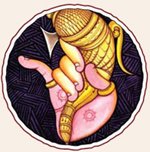 अंकुश§
अंकुश§
Ankusha, the goad held in Lord Ganesha’s right hand, is used to remove obstacles from dharma’s path. It is the force by which all wrongful things are repelled from us, the sharp prod which spurs the dullards onward. Aum.§
 अञ्जलि§
अञ्जलि§
Anjali, the gesture of two hands brought together near the heart, means to “honor or celebrate.” It is our Hindu greeting, two joined as one, the bringing together of matter and spirit, the self meeting the Self in all. Aum.§
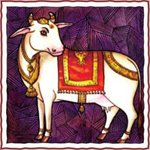 गो§
गो§
Go, the cow, is a symbol of the Earth, the nourisher, the ever-giving, undemanding provider. To the Hindu, all animals are sacred, and we acknowledge this reverence of life in our special affection for the gentle cow. Aum.§
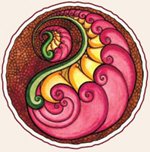 மாங்கோலம்§
மாங்கோலம்§
Mankolam, the pleasing paisley design, is modeled after a mango and associated with Lord Ganesha. Mangos are the sweetest of fruits, symbolizing auspiciousness and the happy fulfillment of legitimate worldly desires. Aum.§
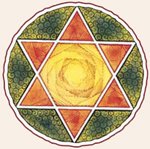 षढ्कोण§
षढ्कोण§
Shatkona, “six-pointed star,” is two interlocking triangles; the upper stands for Siva, purusha and fire, the lower for Shakti, prakriti and water. Their union gives birth to Sanatkumara, whose sacred number is six. Aum.§
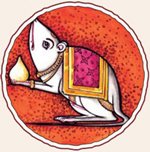 मुषिक§
मुषिक§
Mushika is Lord Ganesha’s mount, the mouse, traditionally associated with abundance in family life. Under cover of darkness, seldom visible yet always at work, Mushika is like God’s unseen grace in our lives. Aum.§
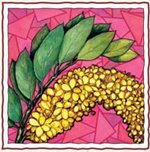 கொன்னற§
கொன்னற§
Konrai, Golden Shower, blossoms are the flowering symbol of Siva’s honeyed grace in our life. Associated with His shrines and temples throughout India, the Cassia fistula is lauded in numberless Tirumurai hymns. Aum.§
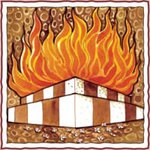 होमकुण्ड§
होमकुण्ड§
Homakunda, the fire altar, is the symbol of ancient Vedic rites. It is through the fire element, denoting divine consciousness, that we make offerings to the Gods. Hindu sacraments are solemnized before the homa fire. Aum.§
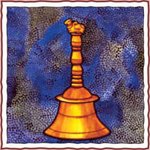 घण्टा§
घण्टा§
Ghanta is the bell used in ritual puja, which engages all senses, including hearing. Its ringing summons the Gods, stimulates the inner ear and reminds us that, like sound, the world may be perceived but not possessed. Aum.§
 गोपुर§
गोपुर§
Gopuras are the towering stone gateways through which pilgrims enter the South Indian temple. Richly ornamented with myriad sculptures of the divine pantheon, their tiers symbolize the several planes of existence. Aum.§
 कलश§
कलश§
Kalasha, a husked coconut circled by mango leaves on a pot, is used in puja to represent any God, especially Lord Ganesha. Breaking a coconut before His shrine is the ego’s shattering to reveal the sweet fruit inside. Aum.§
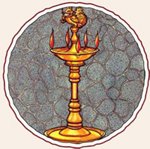 குத்துவிளக்கு§
குத்துவிளக்கு§
Kuttuvilaku, the standing oil lamp, symbolizes the dispelling of ignorance and awakening of the divine light within us. Its soft glow illumines the temple or shrine room, keeping the atmosphere pure and serene. Aum.§
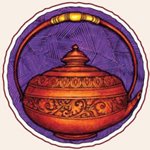 कमण्डलु§
कमण्डलु§
Kamandalu, the water vessel, is carried by the Hindu monastic. It symbolizes his simple, self-contained life, his freedom from worldly needs, his constant sadhana and tapas, and his oath to seek God everywhere. Aum.§
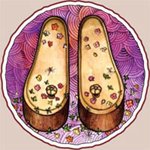 திருவடி§
திருவடி§
Tiruvadi, the sacred sandals worn by saints, sages and satgurus, symbolize the preceptor’s holy feet, which are the source of his grace. Prostrating before him, we humbly touch his feet for release from worldliness. Aum.§
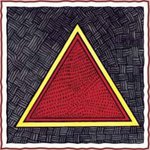 त्रिकोण§
त्रिकोण§
Trikona, the triangle, is a symbol of God Siva which, like the Sivalinga, denotes His Absolute Being. It represents the element fire and portrays the process of spiritual ascent and liberation spoken of in scripture. Aum.§
 சேவல்§
சேவல்§
Seval is the noble red rooster who heralds each dawn, calling all to awake and arise. He is a symbol of the imminence of spiritual unfoldment and wisdom. As a fighting cock, he crows from Lord Skanda’s battle flag. Aum.§
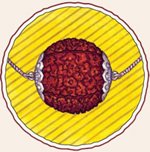 रुद्राक्ष§
रुद्राक्ष§
Rudraksha seeds, Eleocarpus ganitrus, are prized as the compassionate tears Lord Siva shed for mankind’s suffering. Saivites wear malas of them always as a symbol of God’s love, chanting on each bead, “Aum Namah Sivaya.”§
 चन्द्र सूर्य§
चन्द्र सूर्य§
Chandra is the moon, ruler of the watery realms and of emotion, testing place of migrating souls. Surya is the sun, ruler of intellect, source of truth. One is pingala and lights the day; the other is ida and lights the night. Aum.§
 வேல்§
வேல்§
Vel, the holy lance, is Lord Murugan’s protective power, our safeguard in adversity. Its tip is wide, long and sharp, signifying incisive discrimination and spiritual knowledge, which must be broad, deep and penetrating. Aum.§
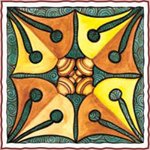 त्रिशूल§
त्रिशूल§
Trishula, Siva’s trident carried by Himalayan yogis, is the royal scepter of the Saiva Dharma. Its triple prongs betoken desire, action and wisdom; ida, pingala and sushumna; and the gunas—sattva, rajas and tamas. Aum.§
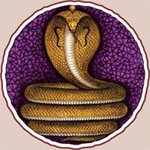 नाग§
नाग§
Naga, the cobra, is a symbol of kundalini power, cosmic energy coiled and slumbering within man. It inspires seekers to overcome misdeeds and suffering by lifting the serpent power up the spine into God Realization. Aum.§
 ध्वज§
ध्वज§
Dhvaja, “flag,” is the orange or red banner flown above temples, at festivals and in processions. It is a symbol of victory, signal to all that “Sanatana Dharma shall prevail.” Its color betokens the sun’s life-giving glow. Aum.§
 कालचक्र§
कालचक्र§
Kalachakra, “wheel, or circle, of time,” is the symbol of perfect creation, of the cycles of existence. Time and space are interwoven, and eight spokes mark the directions, each ruled by a Deity and having a unique quality. Aum.§
 शिवलिगङ§
शिवलिगङ§
Sivalinga is the ancient mark or symbol of God. This elliptical stone is a formless form betokening Parasiva, That which can never be described or portrayed. The pitha, pedestal, represents Siva’s manifest Parashakti. Aum.§
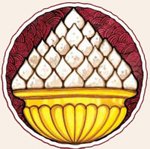 मोदक§
मोदक§
Modaka, a round, lemon-sized sweet made of rice, coconut, sugar and spices, is a favorite treat of Ganesha. Esoterically, it corresponds to siddhi (attainment or fulfillment), the gladdening contentment of pure joy. Aum.§
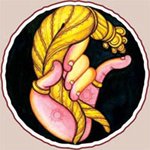 पाश§
पाश§
Pasha, tether or noose, represents the soul’s three-fold bondage of anava, karma and maya. Pasha is the all-important force or fetter by which God (Pati, envisioned as a cowherd) brings souls (pashu, or cows) along the path to Truth. Aum.§
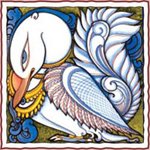 हस§
हस§
Hamsa, vehicle of Brahma, is the swan (more accurately, the wild goose Anser indicus). It is a noble symbol for the soul, and for adept renunciates, Paramahamsa, winging high above the mundane and diving straight to the goal. Aum.§